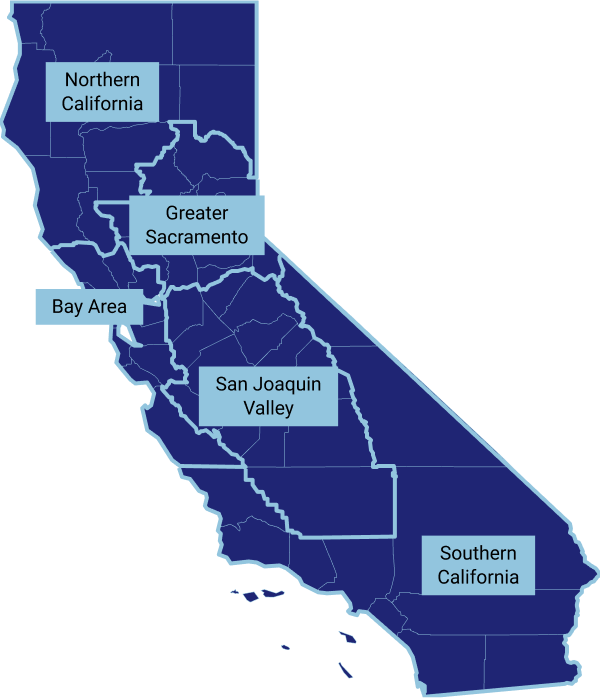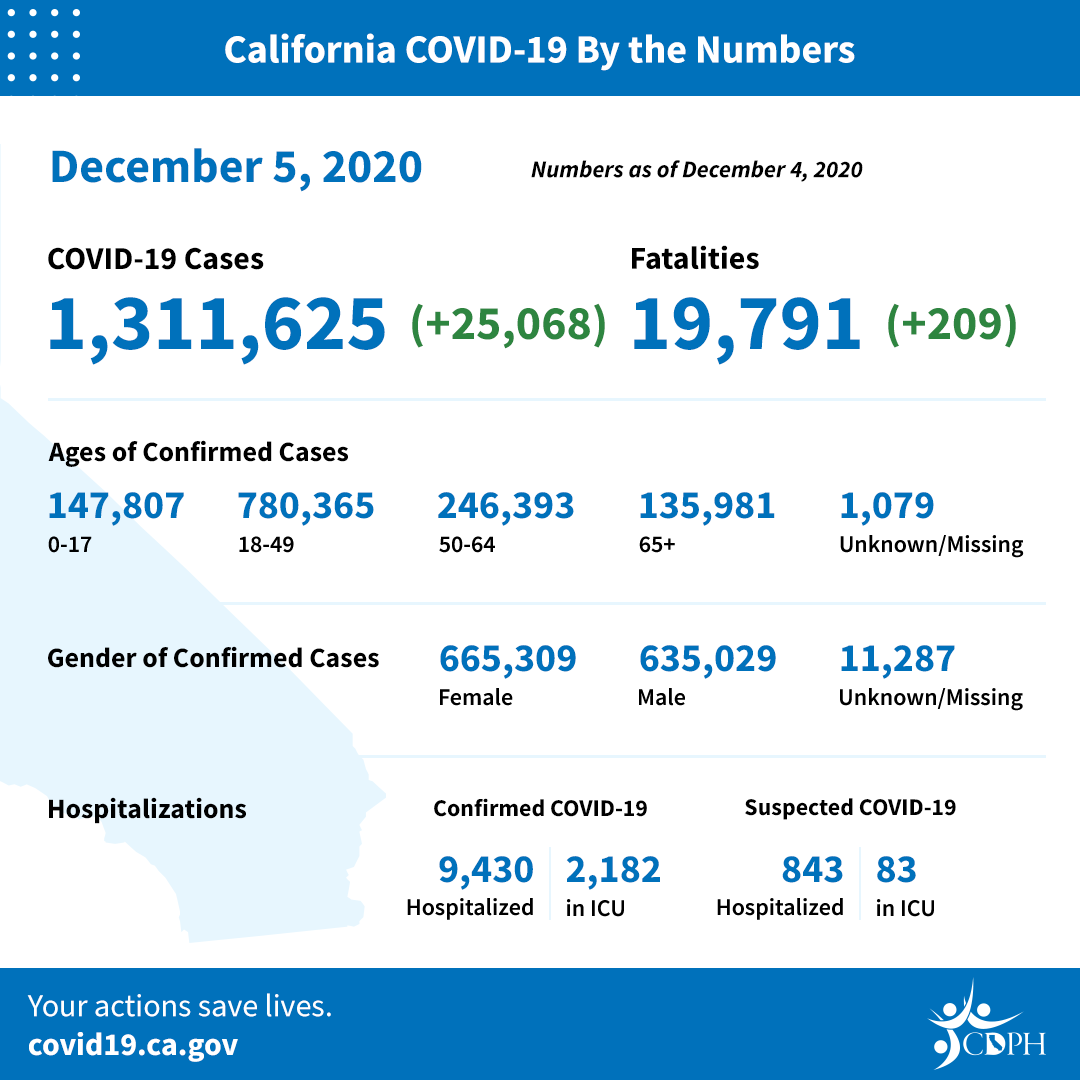Sacramento, CA…The California Department of Public Health (CDPH) today announced the most recent statistics on COVID-19, including data on intensive care unit (ICU) capacity across the state. Based on current ICU data, two regions, San Joaquin Valley and Southern California, have dropped below 15% capacity. The Regional Stay at Home Order will take effect in those two regions at 11:59 p.m. Sunday and will remain in effect for at least three weeks. Regions will be eligible to exit from the order and return to the Blueprint for a Safer Economy on December 28 if ICU capacity projections for the following month are above or equal to 15%.
Below is the current available ICU capacity by region. See region map.
- Bay Area: 21.7%
- Greater Sacramento Region: 21.4%
- Northern California: 24.1%
- San Joaquin Valley: 8.6%
- Southern California: 12.5%
Under the terms of the order, when ICU capacity drops below 15% in a region, a list of sectors must close by 11:59 p.m. the next day, including bars, breweries, distilleries, and wineries (except for production, manufacturing, and retail), hair salons and barbershops, and personal care services. In addition, a number of sectors in these regions, including restaurants, retail and shopping centers and hotels and lodging, will have additional modifications in addition to 100% masking and physical distancing.
Critical infrastructure, schools and non-urgent medical and dental care can remain open with appropriate infectious disease preventative measures.
Read the full Regional Stay at Home Order.
Statewide COVID-19 Data as of December 4:
- California has 1,311,625 confirmed cases to date. Numbers may not represent true day-over-day change as reporting of test results can be delayed.
- There were 25,068 newly recorded confirmed cases Friday. Numbers do not represent true day-over-day change as these results include cases from prior to yesterday.
- The 7-day positivity rate is 9.7% and the 14-day positivity rate is 7.6%.
- There have been 24,901,975 tests conducted in California. This represents an increase of 226,497 over the prior 24-hour reporting period.
- As case numbers continue to rise in California, the total number of individuals who will have serious outcomes will also increase. There have been 19,791 COVID-19 deaths since the start of the pandemic.
Testing Turnaround Time
The testing turnaround dashboard reports how long California patients are waiting for COVID-19 test results. California has worked to reduce testing turnaround times in recent weeks to help curb the spread of the virus. During the week of November 22 to November 28, the average time patients waited for test results was 1.7 days. During this same time period, 51 percent of patients received test results in 1 day and 78 percent received them within 2 days. The testing turnaround time dashboard (PDF) is updated weekly. At this time, all four tiers in the Testing Prioritization Guidance originally dated July 14, 2020, will have equal priority for testing.
Blueprint for a Safer Economy
Governor Gavin Newsom unveiled the Blueprint for a Safer Economy, a statewide plan for reducing COVID-19 and keeping Californians healthy and safe. The plan imposes risk-based criteria on tightening and loosening COVID-19 allowable activities and expands the length of time between changes to assess how any movement affects the trajectory of the disease.
Californians can go to covid19.ca.gov to find out where their county falls and what activities are allowable in each county.
Data and Tools
A wide range of data and analysis guides California’s response to COVID-19. The state is making the data and its analytical tools available to researchers, scientists and the public at covid19.ca.gov.
Popular links include:
- The Statewide COVID-19 Dashboard
- The California COVID-19 Assessment Tool (CalCAT)
- State Cases and Deaths Associated with COVID-19 by Age Group
- COVID-19 Race & Ethnicity Data
- COVID-19 Hospital Data and Case Statistics
- View additional datasets at the California Open Data Portal (Including: Testing Data, PPE Logistics Data, Hospital Data, Homeless Impact and more)




